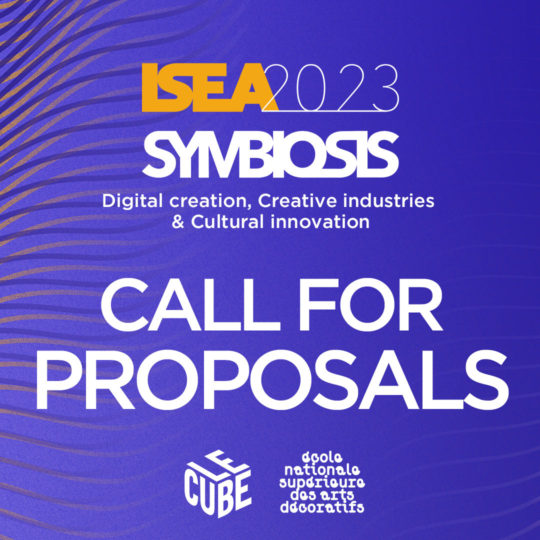
- This event has passed.
Call for Submissions – Radio – A Space for Sonic Art

ORGANISED SOUND
Call for Submissions – Volume 29, Number 1
Issue thematic title: “Radio – A Space for Sonic Art”
Date of Publication: April 2024
Publishers: Cambridge University Press
Issue co-ordinator: Michal Rataj (michal.rataj@hamu.cz)
Deadline for submission: 15 May 2023
Call for Submissions – Radio – A Space for Sonic Art
Background:
Since the beginning of the 20th century radio as a medium has built all kinds of synapses in societies, cultural practices and art discourses. Despite the fact that it was expected to be overshadowed by the rise of television, it has continued to challenge norms within a wide variety of creativity across art disciplines. The internet has been questioning the position of radio again, yet it is still radio as sound medium that provokes sonic imagination from surprising creative angles, which do not only emerge from within public service environments.
Across the history of the radio medium we not only approach fascination with bi-directional communication, but also an unprecedented subversive emphasis on aural approaches despite the continuously increasing visuality of the past century. Along with the history of radio we have been witnessing the rise of new studio technologies and distribution strategies, which have not only influenced radical change regarding the listening experience, but have also directly influenced the way artists make the art of sound (let’s call it music). New technologies and instruments have emerged from inside radio studios in order to reveal completely new timbral and spatial experiences of the work of composers, poets, theatre and film makers, as well as visual artists. Listeners are part of a democratic “listening space for all” (Klaus Schöning 1997), while any distant spaces become part of the new radio space (F. T. Marinetti & Pino Masnata 1933).
Already at the beginning of public radio we can identify how differently traditional acoustic content had to be approached when being picked up by microphones inside the radio studio (Kurt Weill 1975). This directly influenced not only how new music started to be recorded but also what kinds of new sonic creativity were about to emerge, including musique concrète, Hörspiel, sound poetry, sound film, soundscape and radio opera, among many others.
Radio as medium in contemporary art practice has developed from its primary purpose of sound distribution into a variety of creative and social strategies, where sound has turned out to be the principal common denominator across creative disciplines, social communities and cultural regions. At the threshold of the second quarter of the 21st century we are questioning the role of radio inside an intermedia discourse with respect to its history, subversive social potential, imaginative potential and audio creativity, as well as its power to build bridges across communities of artists and listeners.
This issue of Organised Sound will be the first dedicated to sonic exploration by way of the radio medium over the decades, as well as its future potential.
• Historical aspects of radio with respect to the current intermedia scene
• Creative and social potential of audio creativity
• Radio potential challenged by the internet
• Audio creativity challenging mainstream radio content
• Approaches of public service radio stations to innovative audio content
• Independent radio initiatives as cultural and social subversion
• The radio as musical instrument
• Radiophony as compositional strategy
• Visual aspects of radiophonic creation
• Aesthetic aspects of making for radio
• Radio making as politicsThis call is open to all, and we wish particularly to encourage submissions from often under-represented groups in these fora, and also creatively and collaboratively-produced articles.Furthermore, as always, submissions unrelated to the theme but relevant to the journal’s areas of focus are always welcome.
References
• Marinetti, F. T. & Masnata, P. 1991. La Radia (1933). In D. Kahn & G. Whitehead (eds.) Wireles Imagination. Sound, radio and the avant-garde. Cambridge MA: MIT Press, 266 – 268.
• Schöning, K. 1997. Klangreise – Sound Journey. Studio Akustische Kunst. 155 Werke 1968 – 1997. Köln: WDR.
• Weill, K. 1975. Der Rundfunk und die Umschichtung des Musiklebens (1926). In: Weill, K. Ausgewählte Schriften. Frankfurt am Main: Suhrkamp Taschenbuch, 285.
SUBMISSION DEADLINE: 15 May 2023
SUBMISSION FORMAT: Notes for Contributors including how to submit on Scholar One and further details can be obtained from the inside back cover of published issues of Organised Sound or at the following url:
https://www.cambridge.org/core/journals/organised-sound/information/instructions-contributors (and download the pdf)General queries should be sent to:
os@dmu.ac.uk, not to the guest editor.Hard copy of articles and images and other material (e.g., sound and video files, etc. – normally max. 15’ sound files or 8’ movie files), both only when requested, should be submitted to:
Prof. Leigh Landy
Organised Sound
Clephan Building
De Montfort University
Leicester LE1 9BH, UK.
Accepted articles will be published online via FirstView after copy editing prior to the paper version of the journal’s publication.
Editor: Leigh Landy; Associate Editor: James Andean
Founding Editors: Ross Kirk, Tony Myatt and Richard Orton†
Regional Editors: Ricardo Dal Farra, Jøran Rudi, Margaret Schedel, Barry Truax, Ian Whalley, David Worrall, Lonce Wyse
International Editorial Board: Marc Battier, Manuella Blackburn, Alessandro Cipriani, Simon Emmerson, Kenneth Fields, Rajmil Fischman, Eduardo Miranda, Rosemary Mountain, Garth Paine, Mary Simoni, Martin Supper, Daniel Teruggi
Thank you to The Events Calendar for your support!
© 2022 EMF Institute

